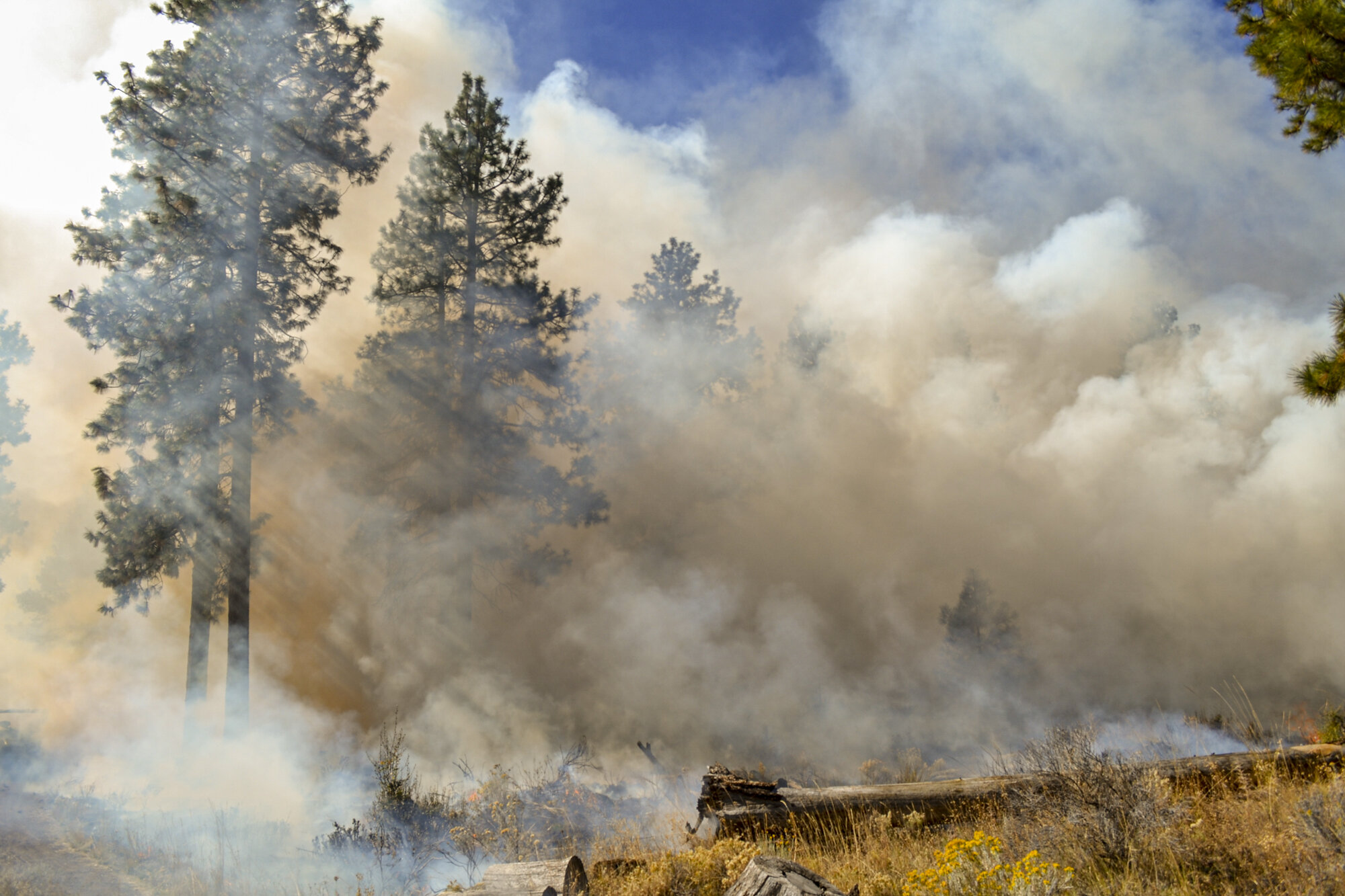Burning for wildlife [VIDEO]
/Prescribed fire improves habitat and protects neighbors
A low-intensity prescribed burn like the one at Bear Valley refuge clears off the forest floor, leaving the larger preferred eagle roost trees better able to maintain resiliency against catastrophic wildfire. Credit: Susan Sawyer/USFWS
In a forest few people ever visit, scattered black logs burned over a decade ago peek out of the dense yellowed vegetation littering the forest floor. This contrasts with the bright green shrubs on the slope and the needles adorning tall evergreen trees above.
Over the course of a week in October, about 170 acres of this landscape at Bear Valley National Wildlife Refuge in southern Oregon was altered by fire. Not an out of control, high-intensity wildfire, but rather one that was started intentionally by the U.S. Fish and Wildlife Service.
Planning a fire may seem counterintuitive, considering the impact of recent devastating wildfires in California, but the purpose of the Bear Valley fire was to clear accumulated forest vegetation, or fuels, to prevent a catastrophic wildfire and to help wildlife - in particular our nation’s symbol, the American bald eagle.
Bear Valley refuge, which lies just north of the California border, was established in 1978 to protect a night roost site for wintering bald eagles.
The refuge consists of 4,200 acres of large, older, open-crowned conifers that offer the big birds easy landings and takeoffs. It is one of six refuges that make up the Klamath Basin National Wildlife Refuge Complex in California and Oregon. Bear Valley is closed to the public all year, except for a few permitted walk-in deer hunters in early fall.
Eagles arrive in November, and spend their days hunting the valley marshes and farm fields for waterfowl and rodents. When done dining, the eagles seek out protected perches, usually near the tops of large conifer trees. Located on a northeast slope, the pine, fir and cedar trees on the Bear Valley refuge provide shelter from the harsh winter winds. As many as 300 bald eagles have roosted here in a single night, with a few nesting as well.
Bear Valley National Wildlife Refuge was set aside in 1978 to provide night roost habitat for hundreds of wintering bald eagles in the Klamath Basin. Credit: USFWS
Over the last decade, smaller trees and brush have grown beneath and between the larger roost trees, competing for space, sunlight, water and nutrients. This managed burn was planned to restore conditions like natural fire does, but with precision and control.
The Bear Valley prescribed fire was carefully planned, executed and controlled by the Service's professional fire crew based at the refuge complex headquarters in Tulelake, California. Crew members from the local U.S. Forest Service and National Park Service offices also participated.
Jeb Koons, zone fire management officer for the Klamath Basin refuge complex, compared prescribed burns to medical prescriptions for humans. A fire “prescription” will result in a healthier habitat that benefits wildlife and helps protect refuge neighbors from catastrophic wildfire.
“If you want to increase growth and regeneration potential of desired roost trees that are more fire-resistant, then the ‘medicine’ is low-intensity fire every decade or so,” said Koons.
The Bear Valley refuge borders two rural subdivisions, farms, and federal and private timberland, and smoke from the prescribed burn was visible for miles.
“I think people are both supportive and apprehensive when it comes to prescribed fire and smoke,” said Ken Griggs, deputy project leader for the refuge complex. “Burning away the underbrush now will not only benefit the plants and animals, it will greatly decrease the chance of a wildfire spreading into the subdivisions for many years to come.”
The ignition team lights the fire in a carefully executed grid pattern across the forest floor. Drip torches, which contain a flaming mixture of gas and diesel fuel, are the most common tool used to ignite prescribed fires. Credit: Susan Sawyer/USFWS
To prevent the flames from crossing into areas not intended for burning, crews dig lines in the forest floor, creating bare dirt barriers. Then it’s up to nature to provide the right combination of conditions to ensure a good burn. This includes humidity, wind, fuel, moisture and air temperature. If conditions aren’t right the day of the burn, the fire is postponed or canceled. Refuge fire crews only have a few weeks each fall to plan and complete the prescribed burn before the eagles return.
Koons was pleased with the results of the Bear Valley burn.
“This was a good example of how a low-intensity fire did what we wanted it to do,” he said. “Fire plays a critical role in wildlife conservation by maintaining balance within the habitat and helping protect the neighboring community.”


